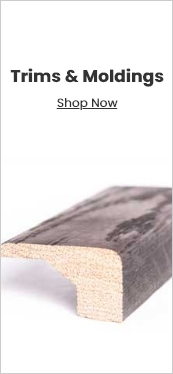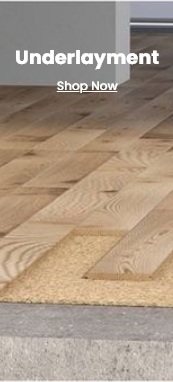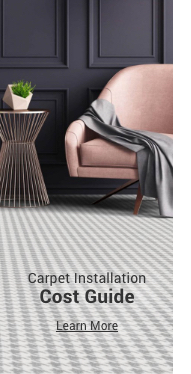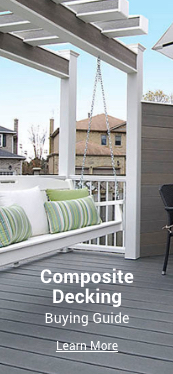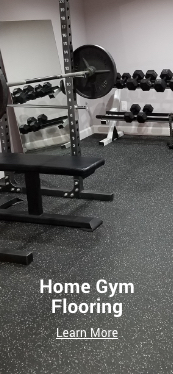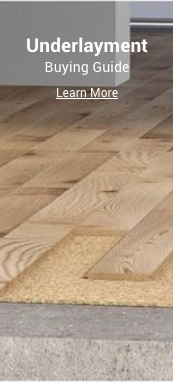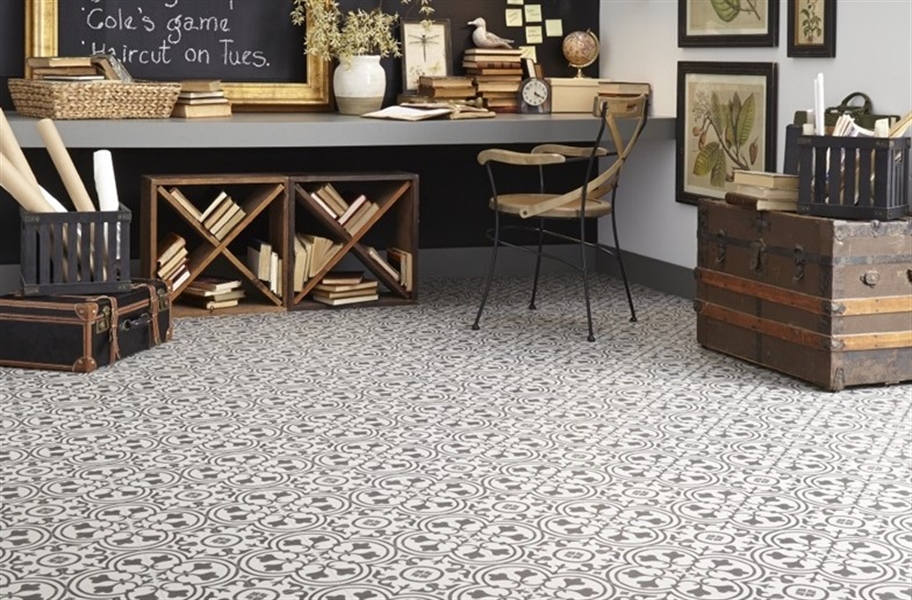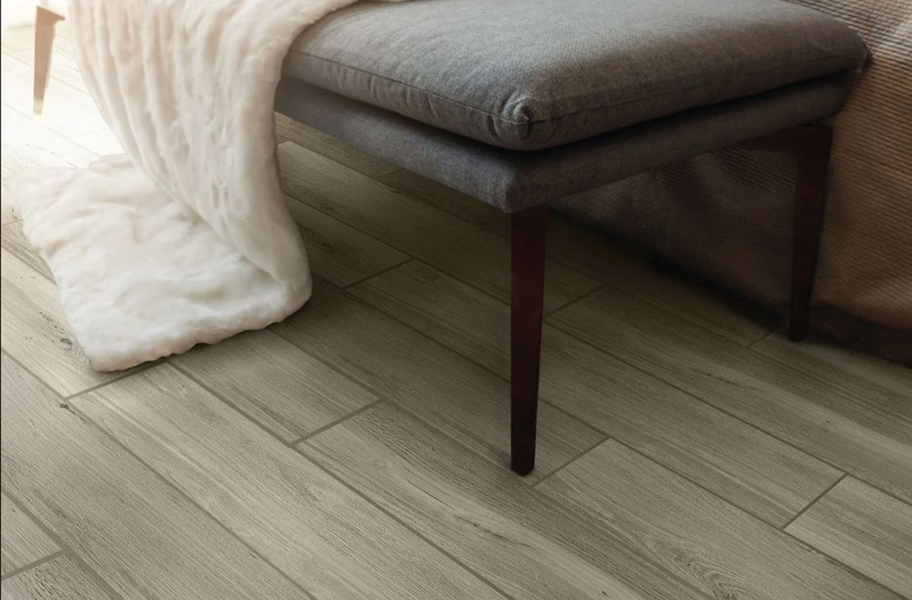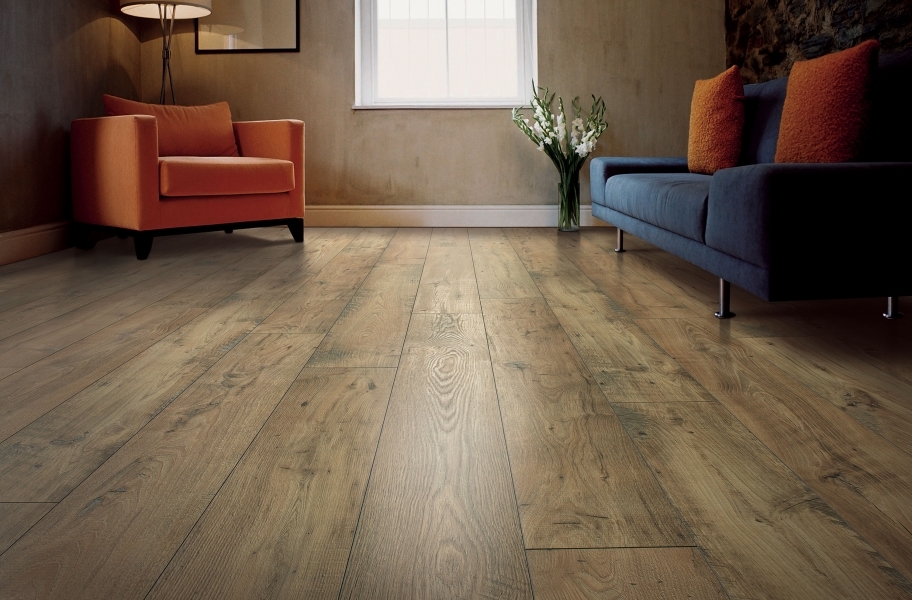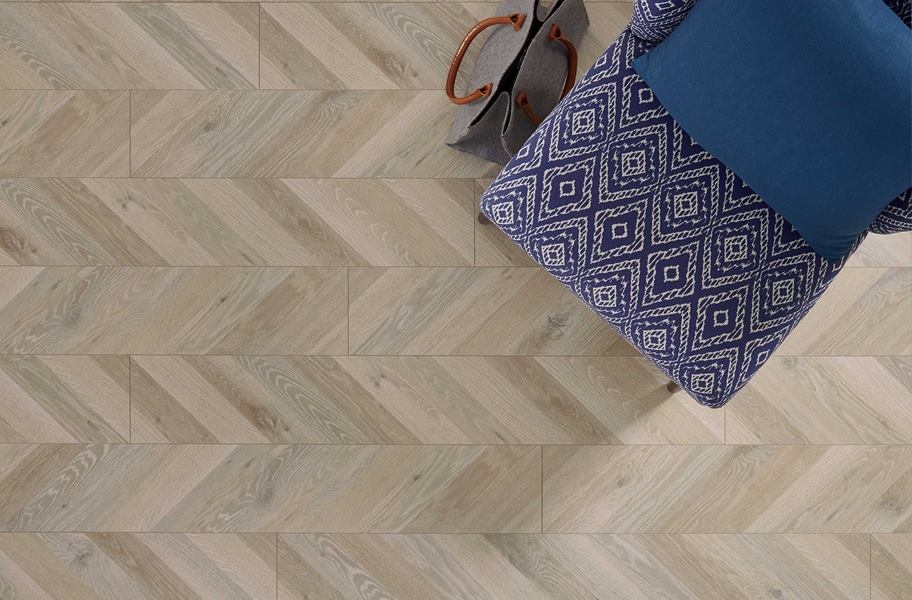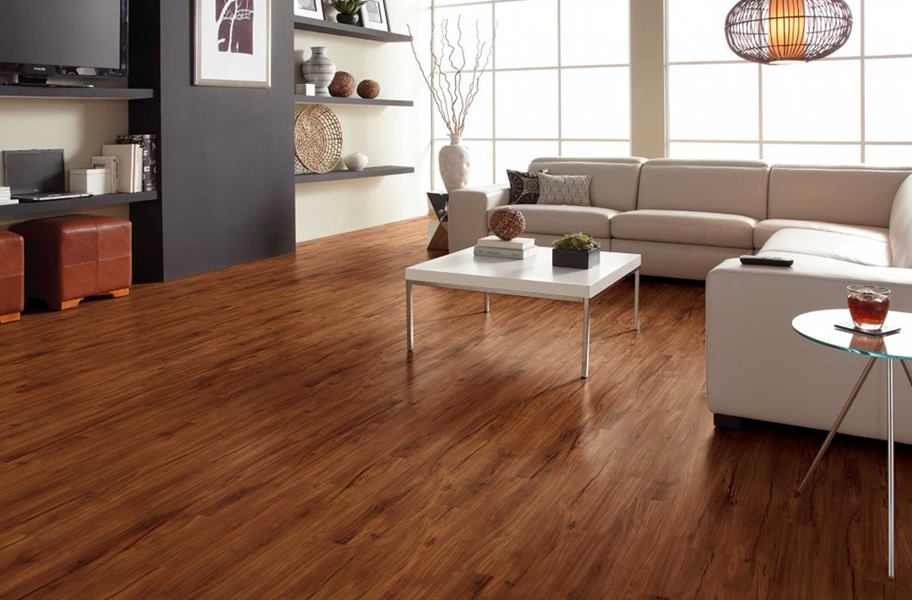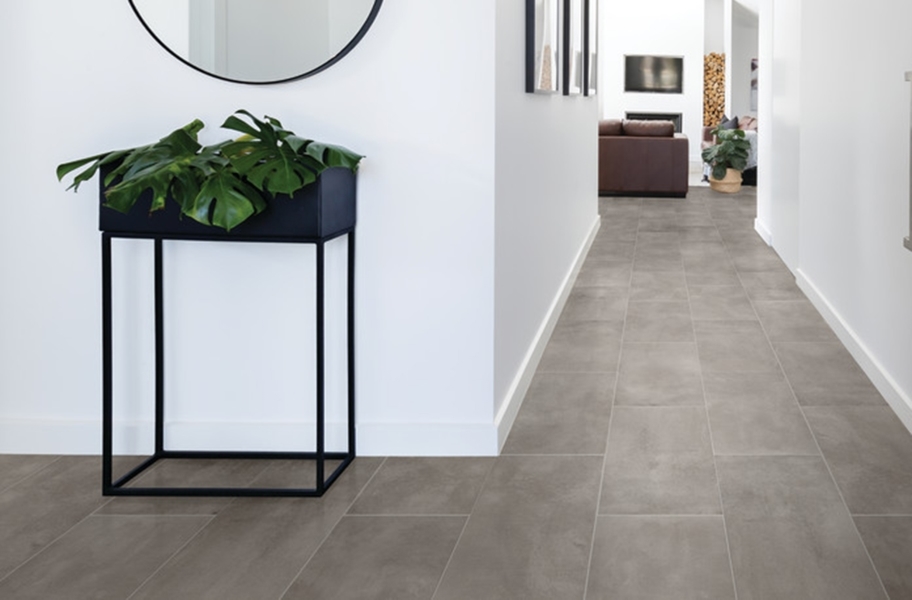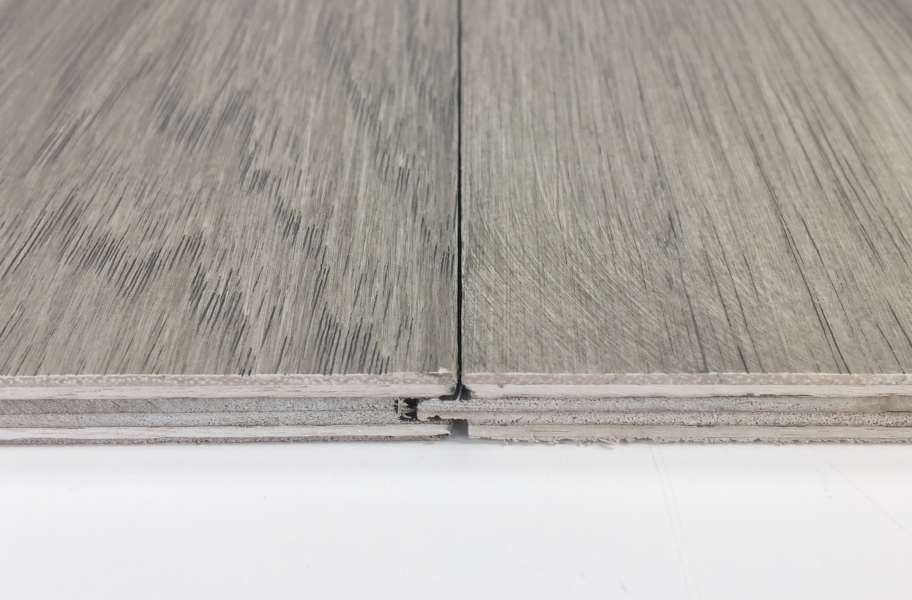What is a Floating Floor Installation? The Ultimate Guide
| Fact Checked By: Ashley De Zeeuw
Published: April 21, 2021 | Updated: April 29, 2022
A floating floor is probably the most convenient installation method for flooring. But it’s also the most misunderstood. When you hear the term “floating floor” it leaves a lot of room for the imagination.
To provide some clarification, however, this guide will walk you through everything you need to know about floating floor installation. From learning how it’s done to discovering what flooring options you can float, there’s a lot to learn. Are you ready to dive in?
What is a Floating Floor?
A floating floor is a method of installation in which the floor is not attached to its subfloor. For instance, depending on the flooring type, the planks or tiles fit together with a tongue and groove mechanism or an interlocking system. This process does not typically require power tools or professional installers.
Floating floor installation saves money and helps you quickly install your new floors, making it a favorite method for DIYers. To better understand all the facts, check out some of the pros and cons.
Floating Floor Pros and Cons
Pros
- DIY-friendly: Floating floors do not require a professional installation. You can install your floors by yourself in no time at all.
- Saves money: By installing yourself, and bypassing paying for a professional installation, floating floors help keep you to your budget.
- Installs quickly: Floating floors only require power tools for cutting the floor to fit. Outside of that, all you have to do is fit your flooring together, creating a quick installation process.
- Much easier to replace: Because floating floors are not fastened to the
Cons
- Sound amplification: If you install rigid, flat floors over a subfloor that is not completely flat, you will hear a tapping sound and amplified footfalls. To prevent this, install underlayment under your floating floor.
- Humidity: Floating floors can allow a floor to contract and expand with different humidity levels.
| Related Content >> Best Vinyl Sheet Flooring Options |
How to Install a Floating Floor
Floating floors are easily installed with a little bit of help. Check out these general instructions on how to install a floating floor. For more specific installation instructions for your particular floating floor, be sure to check with the flooring manufacturer.
- First, complete any necessary subfloor prep. You can install most floating floors over most imperfect surfaces, like uneven subfloors, or existing floors such as low-pile carpet, cement, brick, and more.
- Lay the first plank or tile with the tongue side facing the wall, and press the end of the starter plank or tile into the next and then lock them together. Continue working left to right. Make sure to follow the manufacturer’s guidelines and leave the required spacing for expansion.
- Then, install the second row by tilting it at a shallow angle and inserting the tongue into the groove of the first row.
- Continue installing the flooring, removing any gaps using a tapping block and a scrap of flooring to cover the tapping block. Be careful not to damage the tongue and groove.
- Protect all exposed edges by installing wall molding and/or transition strips.
Notes: For wood floors with a tongue and groove system, tongue and groove glue may be required to secure planks to each other. Simply apply the glue to the tongue of the plank before pressing it into the groove of another plank.
If your flooring needs to be trimmed to fit, check the manufacturer’s specific cutting instructions.
Best Floating Floor Options
So, what floors can be floated? From laminate to tile, there’s a whole category of flooring that can be floated over the existing subfloor. Let’s take a look at the options.
Floating Laminate Floors
A low-cost alternative to traditional solid wood, laminate is a durable floor material that comes in many attractive styles. Features like water resistance, tongue and groove installation, and low-maintenance cleaning make laminate a flooring favorite.
Pros and Cons of Floating Laminate
Pros
- Durable: Laminate flooring’s supreme durability makes it a good option for high-traffic areas or homes with kids and pets.
- Variety of options: Almost all laminate floors can be floated over floors, take your pick!
- Realistic wood looks: Laminate floor planks often have some surface detail to further mimic a natural hardwood look and can have the look and feel of a hand-scraped hardwood, embossed wood, distressed hardwood, or come in textured or smooth.
- Can resist some water: While not all laminate is waterproof, most laminate options are water-resistant. Proper installation helps keep water from seeping through the planks.
Cons
- Sound: If installed on uneven surfaces, laminate floors can create a hollow, empty sound. Using underlayment helps the sound quality. Plus, every product comes with thorough installation instructions, and if you’re really worried, you can always hire an expert.
- Limited styles: If you want anything other than wood-look flooring options, laminate is not the option to choose from.
Top-Rated Floating Laminate Floors
- Hillside Hickory Waterproof Laminate
- Mohawk Elderwood Waterproof Laminate
- Mannington Arcadia Waterproof Laminate
| Related Content >> How to Install Laminate Flooring |
Floating Vinyl Floors
Vinyl planks, tiles, and sheets are low-maintenance, resilient flooring solutions made to resemble stone and hardwood floors. Available in vinyl tiles, planks, and rolls, each option easily floats over a variety of subfloors, so you can upgrade your floors in no time at all.
Pros and Cons of Floating Vinyl
Pros
- Gorgeous wood and stone look: Luxury vinyl flooring mimics all the most popular colors and textures of solid hardwood and natural stone.
- Low maintenance: Vinyl flooring is easy to clean and doesn’t require much upkeep like natural hardwood floors. The thicker the wear layer you choose, the more scratch and stain resistant the product.
- Waterproof options: Hardwood can’t be 100% waterproof, but with vinyl, you can get a hardwood look that’s also waterproof.
Cons
- Price: Vinyl flooring has waterproof options and more life-friendly features that may increase its price.
Top-Rated Floating Vinyl Floors
- TritonCORE Pro 7″ Rigid Core Vinyl Planks
- Stone Flex Tiles – Classic Collection
- COREtec Pro Plus 7″ Rigid Core Vinyl Planks
Shop All Floating Vinyl Floors
| Related Content >> Vinyl Flooring FAQ |
Floating Engineered Wood Floors
To add value to your home, consider engineered hardwood. Topped with a real wood veneer, these floors are an awesome, durable alternative to traditional solid wood floors, and can be installed on every floor in a home. The tongue and groove method is the most common installation method for engineered hardwood.
Pros and Cons of Floating Engineered Wood
Pros
- Every plank is unique: Since this is a real wood veneer, you’ll never find a repeating pattern or an unconvincing texture.
- Variety of options: A large portion of engineered wood flooring can be floated over the subfloor. So, choose your favorite, and get started!
- Increases home value: With engineered hardwood, you’ll recoup 70% to 80% of your investment through your property values because of its style and durability.
- Moisture resistance: Depending on the core of your flooring, your engineered wood could be moisture resistant.
- Install it anywhere: High moisture resistance means you can install it in bathrooms, kitchens, laundry rooms, and even basements! No grade level of your home is off-limits.
Cons
- Maintenance: Because of engineered wood’s real wood veneer, the floor requires more care.
Top-Rated Floating Engineered Wood Floors
- Cittadina Engineered Hardwood
- Johnson Hardwood Toscana Hickory Engineered Wood
- 12mm Mannington Park City Oak Engineered Wood
Shop All Floating Engineered Wood Floors
| Related Content >> Engineered Hardwood FAQ: Everything You Need to Know |
Floating Tile Floor
Oh yeah, some tile can be floated too! To get gorgeous tile floors effortlessly, simply lock these convenient tiles together and add your grout, no mortar required! Available in wood and stone looks, you can enjoy your new tile floors in a fraction of the time it takes to install the traditional tile.
Pros and Cons of Floating Tile
Pros
- No mortar required: With floating tile floors, mortar is a thing of the past. All you need is some grout to get the job done.
- Low-maintenance: Once tile floors are installed, they are simple to care for. Sweep and damp mop regularly and you’re good to go.
- Wood looks available: Just because it’s tile doesn’t mean your only option is stone. Floating tile has wood-look options available to help elevate your space.
Cons
- Subfloors: Floating tile cannot be installed over uneven subfloors. The surface should be even and flat.
- Cold underfoot: Tile floors are typically cold underfoot, which is never fun during those colder months. To alleviate this, check out our floor heating systems, or try a nice area rug on top of your floors.
- Not resilient: Compared to other flooring types, porcelain tile is hard and unforgiving when standing for long periods.
Top-Rated Floating Tile Floors
| Related Content >> Tile Grout FAQ: Your Questions Answered |
Floating Flooring FAQ
Can I install floating flooring over carpet?
Most floating floors can be installed over imperfect subfloors and existing floors such as carpet. Therefore, you can float laminate, vinyl, and engineered wood over the low-pile carpet. When floating floors over the high-pile or plush carpet, you need to place plywood over the carpet and then install the floor.
Can I install a floating floor myself?
Installing floating floors does not require a professional installer. Floating floors are made for DIYers who love getting the job done all by themselves. Simply lay out the planks or tiles and lock them together over the subfloor.
Does a floating floor need underlayment?
Unless your planks have underlayment attached, underlayment should be installed under most floating floors. However, in cases of floating rubber or garage floors, underlayment is not required.
Underlayment improves sound quality, moisture control, and insulation, as well as extends the life of the flooring while also protecting it. It’s important to always put down underlayment when installing new floors, regardless of installation method.
How does a floating floor stay in place?
Floating floors connect at the seams using a tongue and groove or interlocking system. Once installed, the weight of the floating floor keeps the floor in place for years.
Do floating floors have to acclimate before installation?
Before installing floating floors such as laminate, vinyl, or engineered hardwood, the floor should acclimate to their new environment for at least 48 hours. This allows the floor to adjust, expand, or contrast in the area in which it will be installed to avoid buckling after installation. For more specific acclimation instructions, check with the flooring manufacturer.
Should a floating floor buckle?
Depending on the material, excessive moisture and large temperature changes could cause the floor to expand, buckle, or warp. Therefore, even if it’s attached to the subfloor, floating floors buckle. But if you follow the manufacturer’s acclimation and installation instructions, buckling floors are unlikely.
| Related Content >> Floor Trim and Molding Buying Guide |
Conclusion
Floating floors are one of the most convenient and DIY-friendly flooring installation solutions. From engineered wood to tile, you can easily install floating floors on your own.
Plus, when you want to get started, we have the flooring you’re looking for.
Order Free Samples Shop All Laminate Flooring Shop All Floating Vinyl Floors Shop All Floating Engineered Wood Floors Shop Wood-Look Floating Tile Floors













